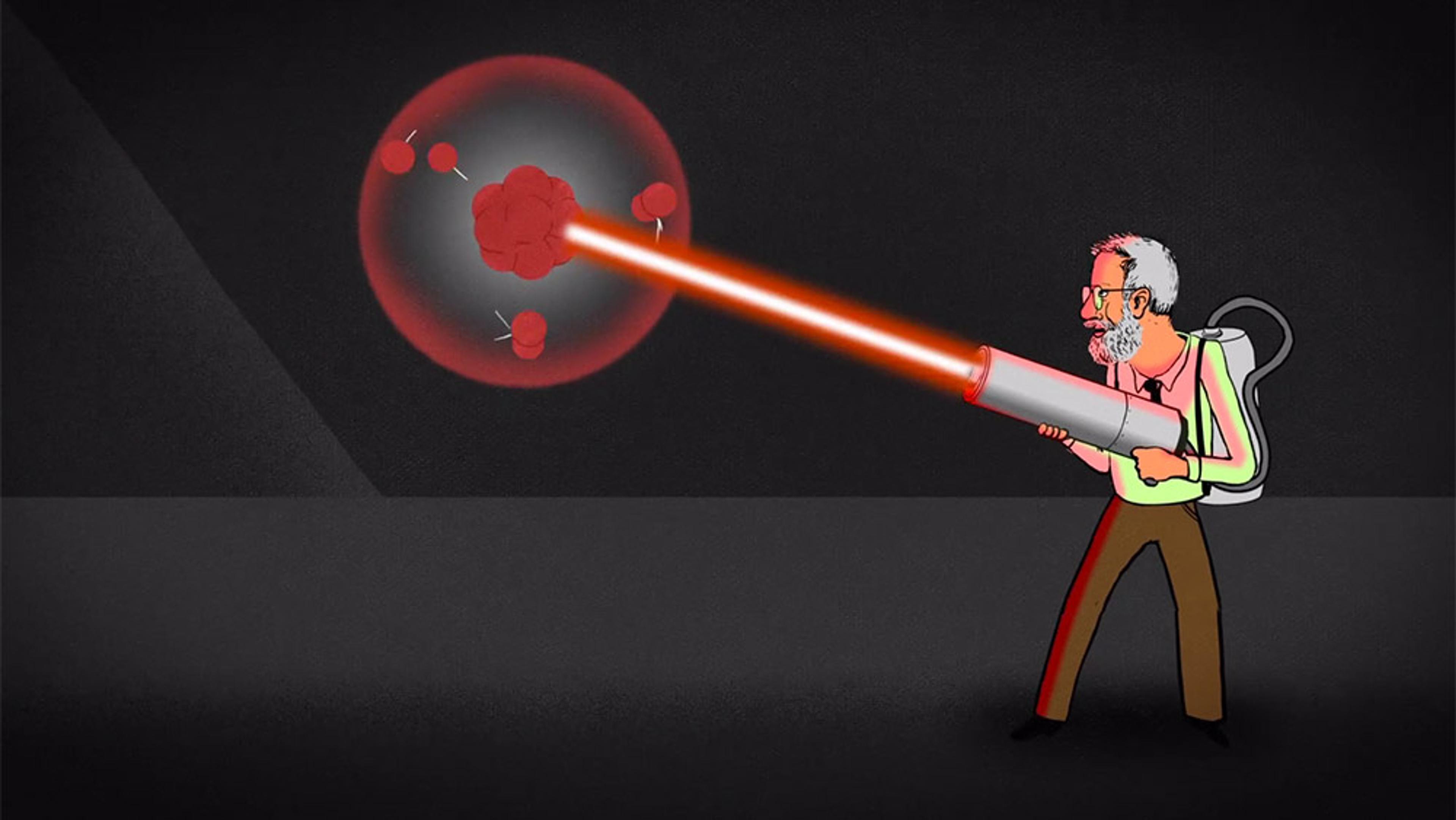Sure, particle accelerators are sprawling, expensive technology that allow scientists unprecedented insight into the nature of matter, but how do they actually work? In this stylishly animated introduction to particle accelerators, the University of Oxford research scientist Suzie Sheehy details the basics of accelerator physics, including how not all accelerators are created equal, and why successfully launching a new accelerator is an occasion more than worthy of a champagne toast.
Making tiny things go extremely fast is a monument to human enquiry and creativity
Video by The Royal Institution
Animator: Andrew Khosravani

videoPhysics
Logic tells us that antimatter should have annihilated the Universe. So why hasn’t it?
4 minutes

videoPhysics
How ticking atoms keep ultra-precise time for globe-connecting technologies
2 minutes

videoQuantum theory
Why aren’t our everyday lives as ‘spooky’ as the quantum world?
7 minutes

videoPhysics
Groundbreaking visualisations show how the world of the nucleus gives rise to our own
10 minutes

videoCosmology
Building ‘bigger and better’ has pushed cosmology forward. Can it take it any further?
7 minutes

videoPhysics
The Standard Model might be the most successful theory in science. But what is it?
16 minutes

videoHistory of science
Energy is like children’s toys: often hiding out of sight, but never actually lost
3 minutes

videoQuantum theory
‘Moving paintings’ evoke a quantum particle collision at the Large Hadron Collider
4 minutes

videoComputing and artificial intelligence
From ‘chandeliers’ to entangled qubits, here’s what happens inside a quantum computer
9 minutes